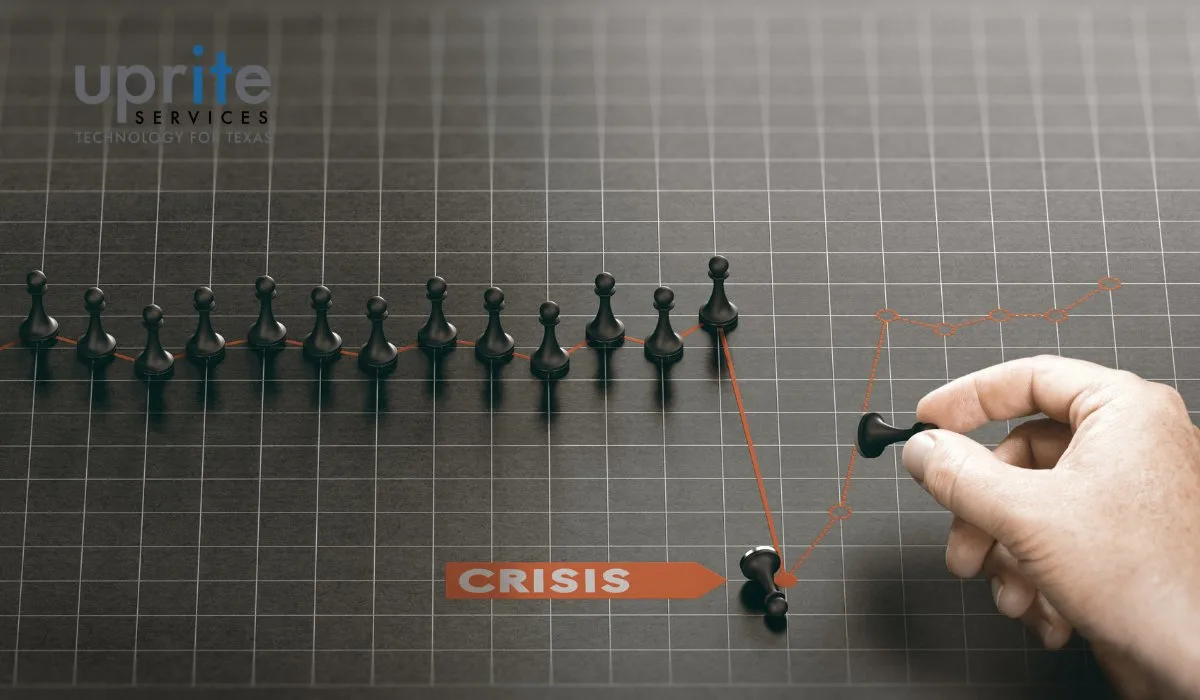
In today’s increasingly digital, global, and volatile business environment, it’s essential to prepare for potential disruptions. These disruptions may range from natural disasters and cyber attacks to supply chain failures and global pandemics. Business continuity planning, a strategy designed to maintain the steady flow of key business functions during and following a disruptive event, is the cornerstone of this preparation.
Business Continuity Vs Disaster Recovery: A Distinction With a Difference
Before diving into the complexities of business continuity planning, it’s necessary to differentiate it from a related concept: disaster recovery.
Disaster recovery refers to the actions taken to restore IT infrastructure and data access after a crisis. It’s a crucial subset of continuity but remains a largely reactive approach. Its primary concern is to rectify the aftermath of an unexpected disruption, such as a server crash or a ransomware attack.
Business continuity, however, takes a broader and more proactive perspective. It’s about maintaining or quickly resuming all essential business functions in the face of a disruption, thereby preventing a total operational standstill. A business continuity plan accounts for every critical function, from IT and customer service to logistics and HR, and devises strategies to keep them running under challenging circumstances.
Essential Components of Business Continuity Planning
A well-devised business continuity plan contains several key components:
Risk Assessment: Deciphering Threats and Implications
Risk assessment is an indispensable step in business continuity planning. It involves:
- Identifying potential threats: This could include everything from cyber threats and power outages to employee strikes and hardware failures.
-
Analyzing the impacts of these threats:
How would a prolonged power outage affect your operations? What would be the consequence of a major cyber attack?
By conducting a comprehensive risk assessment, organizations can prepare for and mitigate these risks effectively.
Recovery Strategies: Preparing for Rapid Response
Recovery strategies are detailed action plans designed to restore critical operations swiftly and efficiently. They provide:
- A blueprint for recovery: This is an ordered list of steps to recover or maintain critical functions based on their priority and significance to the business.
- An assignment of roles and responsibilities: Every team member should know what is expected of them during and after a disruption.
Developing effective recovery strategies, with a clear focus on minimizing downtime and rapidly restoring essential functions, can make the difference between a slight hiccup and a catastrophic halt in operations.
IT Infrastructure and Data Management
In the age of digital business, the role of IT in business continuity planning is paramount. A robust IT strategy within the its plan should include:
- Redundant systems:Duplicate systems or components can take over if the primary ones fail. For example, if your main server fails, a backup server can ensure operations continue uninterrupted.
- Data backup and recovery solutions: Regular data backups are essential to recover lost data in case of a disruption. Cloud-based solutions can provide secure, off-site storage for data backup and ease of recovery.
The Unseen Benefits of Business Continuity Planning
Beyond the clear-cut advantage of mitigating potential financial losses during a disruption, a well-constructed business continuity plan offers numerous less visible benefits:
- Reputation management: Customers, investors, and partners will have increased confidence in a company that can weather any storm and remain operational.
- Regulatory compliance: Many industries are required to have some form of business continuity planning in place to meet regulatory standards.
- Competitive advantage: In a world where disruptions are increasingly common, being one of the few companies that can quickly bounce back can set you apart from the competition.
The Cycle of Continuity Planning: Review, Update, Repeat
It planning is not a one-off exercise. As your business grows, evolves, and changes, so do your potential risks and vulnerabilities. Regular reviews and updates to your plan ensure its effectiveness in the face of new threats. This cycle of reviewing, updating, and testing your plan is what truly creates a resilient, future-ready business. Uprite Services champions this approach to maintain a robust, future-ready business continuity plan.
Conclusion
Business continuity planning is no longer a ‘nice-to-have’—it’s a must for operational resilience in the face of unpredictable disruptions. By cultivating a comprehensive and up-to-date business continuity plan, your organization can navigate any crisis, ensuring a swift and efficient return to normal operations. Remember, Uprite Services is here to guide you every step of the way in fostering resilience and mastering business continuity planning.

Stephen Sweeney, CEO of of Uprite.com, with 20+ years of experience brings tech and creativity together to make cybersecurity simple and IT support seamless. He’s on a mission to help businesses stay secure and ahead of the game!


